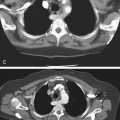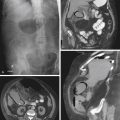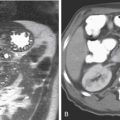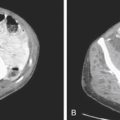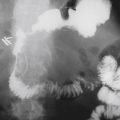CASE 176
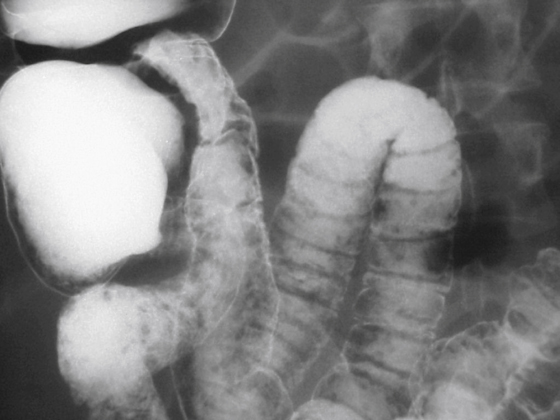
History: A 22-year-old man presents with diarrhea.
1. What should be included in the differential diagnosis of the imaging finding shown in the figure? (Choose all that apply.)
E. Familial adenomatous polyposis
2. What disease is considered to be most commonly associated with nodular lymphoid hyperplasia?
3. With what complication is lymphoid hyperplasia associated in the pediatric age group?
4. What are normal lymphoid aggregates in the ileum called?
ANSWERS
CASE 176
Lymphoid Hyperplasia of the Terminal Ileum
1. D and E
2. B
3. C
4. B
References
Levine MS, Rubesin SE, Laufer I. Pattern approach for diseases of mesenteric small bowel on barium studies. Radiology. 2008;249(2):445-460.
Cross-Reference
Gastrointestinal Imaging: THE REQUISITES, 3rd ed, p 127.
Comment
The condition of lymphoid hyperplasia is often a normal finding in children. It is thought by some authors that lymphoid hyperplasia might act as a nidus for childhood idiopathic ileocolic intussusception. The pattern has also been described in patients with immunodeficiency, giardiasis infestation, Yersinia infections of the small bowel (usually the terminal ileum), Whipple’s disease, and Waldenström’s macroglobulinemia. Some investigators believe there is an association of lymphoid hyperplasia of the terminal ileum with the development of Crohn’s disease in the distal small bowel. These nodules can range in size from 2 to 5 mm and usually involve the distal small bowel (see figure). Crossover into the colon is unusual, although colonic lymphoid hyperplasia is a known entity. In most cases, these nodules are regarded as a reactive hyperplasia secondary to bowel response to a viral infectious or inflammatory process that is generally self-limiting and eventually disappears.
It is thought that in some cases nodular lymphoid hyperplasia may be a presenting sign of small bowel multifocal lymphoma. Another unusual association that has been reported is lactose intolerance. In some instances in adults, the condition has been pronounced and symptomatic with weight loss, diarrhea, and abdominal pain to the point at which resection of the terminal ileum was undertaken with varying results.

